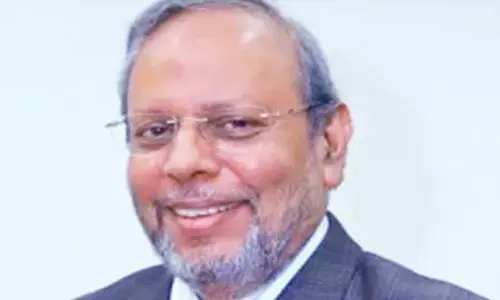Inflation, Interest rates and Economy - Vicious circle

governor Raghuram Rajan, Inflation, Interest rates and Economy - Vicious circle, The Reserve Bank of India’s (RBI’s) latest bi-monthly policy review, first for the fiscal year 2015
.jpg) The Reserve Bank of India’s (RBI’s) latest bi-monthly policy review, first for the fiscal year 2015, maintained the status quo; keeping policy rates to what they were the last time.
The Reserve Bank of India’s (RBI’s) latest bi-monthly policy review, first for the fiscal year 2015, maintained the status quo; keeping policy rates to what they were the last time.The governor Raghuram Rajan was seen content, a partially though, with inflation ultimately getting tamed to a lower level – the hawkish tone of the RBI remains integral. And, those who may think that the next time a cut in policy rates is playing on cards, must understand, smiling Rajan and declining inflation trend, doesn’t pen down a script ahead that guarantees rate cuts, finally.
The Consumer Price Inflation (CPI) fell down from the 11.8 per cent a year ago to 8.1 per cent in February, still the RBI sounds hawkish. Furthermore, the governor hints towards some factors which can disrupt the declining inflation trend – not comfortable on learning this.
To all those who argue that the waning inclination in inflation may continue unabated due to base effect of high inflation during June to November duration in 2013 may be displeased to know Rajan’s views that this can be only described as “temporary softening” of rates – more due to high headline inflation during the year 2014. Interesting!
Here is something to look out for:
· CPI may have observed considerable beg off, but core-CPI based inflation has still remained high at around 8 per cent. It is a concerning number in itself, when seen with a close eye.
· The number relates to a period when the demand has been relatively meek compared to other times and especially when the economy is moving at snail’s pace – below 5 per cent growth rate.
· The bottlenecks in the field of power generation and infrastructure sector remain a major roadblock still and can easily help inflation to climb to new highs, once again.
For the same reason, Rajan was witnessed stressing upon a “stable government” factor throughout the conference. Policy paralysis is a problem to look into and only a government that has stable majority in the house can come up with a solution regarding how to kill the paralysis in policy making – or more so in implementation; at least what bulk of the economists and market experts believe currently.
RBI is doing its bits and the formation of “Urjit Patel Committee” is one such step in the right direction – although, incumbent government may object to the measure terming it as an overlapping of central government’s prerogative and sole duty in this regard – oblivious of the fact that nothing concrete could be achieved the latter in this regard since long.
Other factor
At present, India is growing at far lower rate than what the potential allows. 5-6 per cent is no match to once achieved 8.5-9 per cent growth rate. And, in case, a stable government arrives at the centre with willingness to clear road blocks in economy and lock horns with red-tapism, the country will see a return of pricing power and in turn higher inflation.
Furthermore, the RBI wants the households to save more. With better rate of savings offered by the banks, an increase in savings will be witnessed followed by higher investments, and thus again allowing for a scenario with elevated policy rates.
Anyhow, the Urjit Patel Committee has always suggested the central bank to keep rates high, so as to maintain the “glide path.” So, this is not good news for anyone taking gratification out of declining inflation, and dreaming about a rate cut in the next outing of the RBI.
Still, keep fingers crossed, and hope for the best!
Next Story

















